Affiliate links on Android Authority may earn us a commission. Learn more.
Google phones: A history of the Nexus and Pixel lineup so far
Published onJanuary 1, 2023
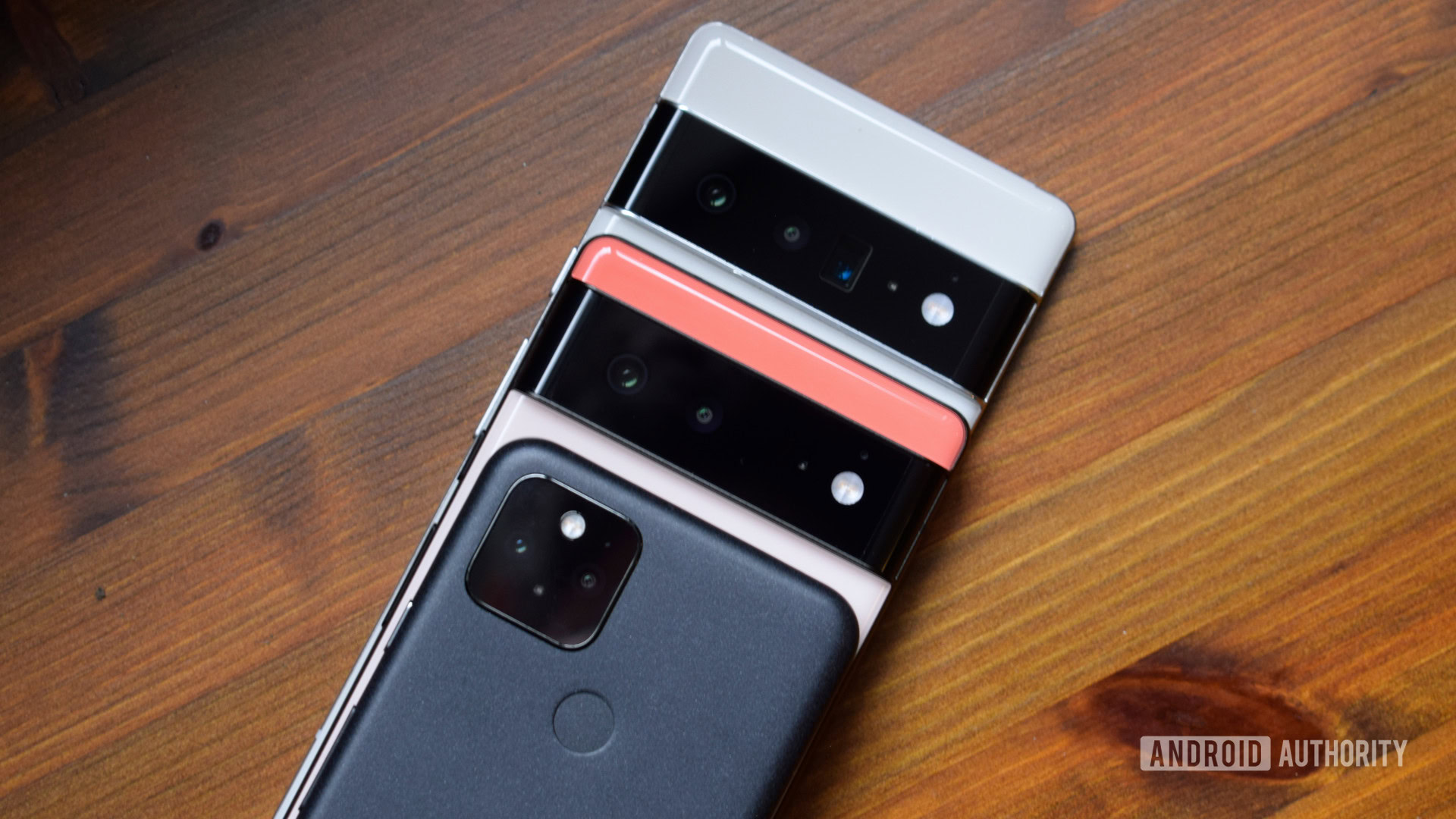
Google unveiled Android to the world in 2007, two years after acquiring the operating system for $50 million. While many expected the search giant to announce its own phone as Apple did with the iPhone, Google’s decision to make Android freely available to any manufacturer was an even bigger event. Of course, we now know that the company eventually entered the hardware industry and has even found success in recent years with the Pixel series.
To understand how Google managed to carve out a niche for itself in the competitive smartphone market, let’s go over the company’s smartphone journey over the past 15 years. From the Nexus One to the latest Google Pixel, they’re all here.
Android Dev Phone 1
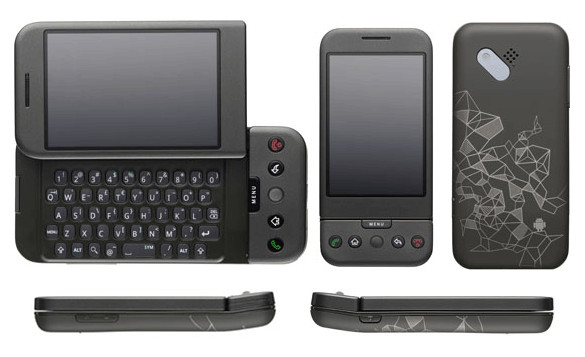
The Android Dev Phone 1 wasn’t destined for retail shelves or end-user pockets, but it was the first smartphone you could buy directly from Google, representing a pivotal moment in the history of cell phones. It was based on the HTCDream, the first-ever smartphone to run the Android operating system. While you could only buy the HTCDream in select North American and European markets, Google made the Android Dev Phone 1 more widely available to developers in 19 international markets.
The Android Dev Phone 1 was sold publicly, but Google didn't recommend buying one for daily use.
Google removed all restrictions from Android 1.0 on the Dev Phone 1, meaning it shipped with an unlocked bootloader. Put simply, a developer (or handset manufacturer) could flash their own modified build of Android. It also didn’t include copy protection, which meant that certain apps didn’t appear on the device’s Android Market. Google has since rebranded Android Market to the Play Store.
You could buy the Android Dev Phone 1 in early 2009 for just $399. However, Google strongly emphasized that it wasn’t meant to be used by average customers and didn’t market the phone as such. It was eventually succeeded by the Android Dev Phone 2, which was based on the HTCMagic.
Nexus One: The first-ever Google smartphone for consumers
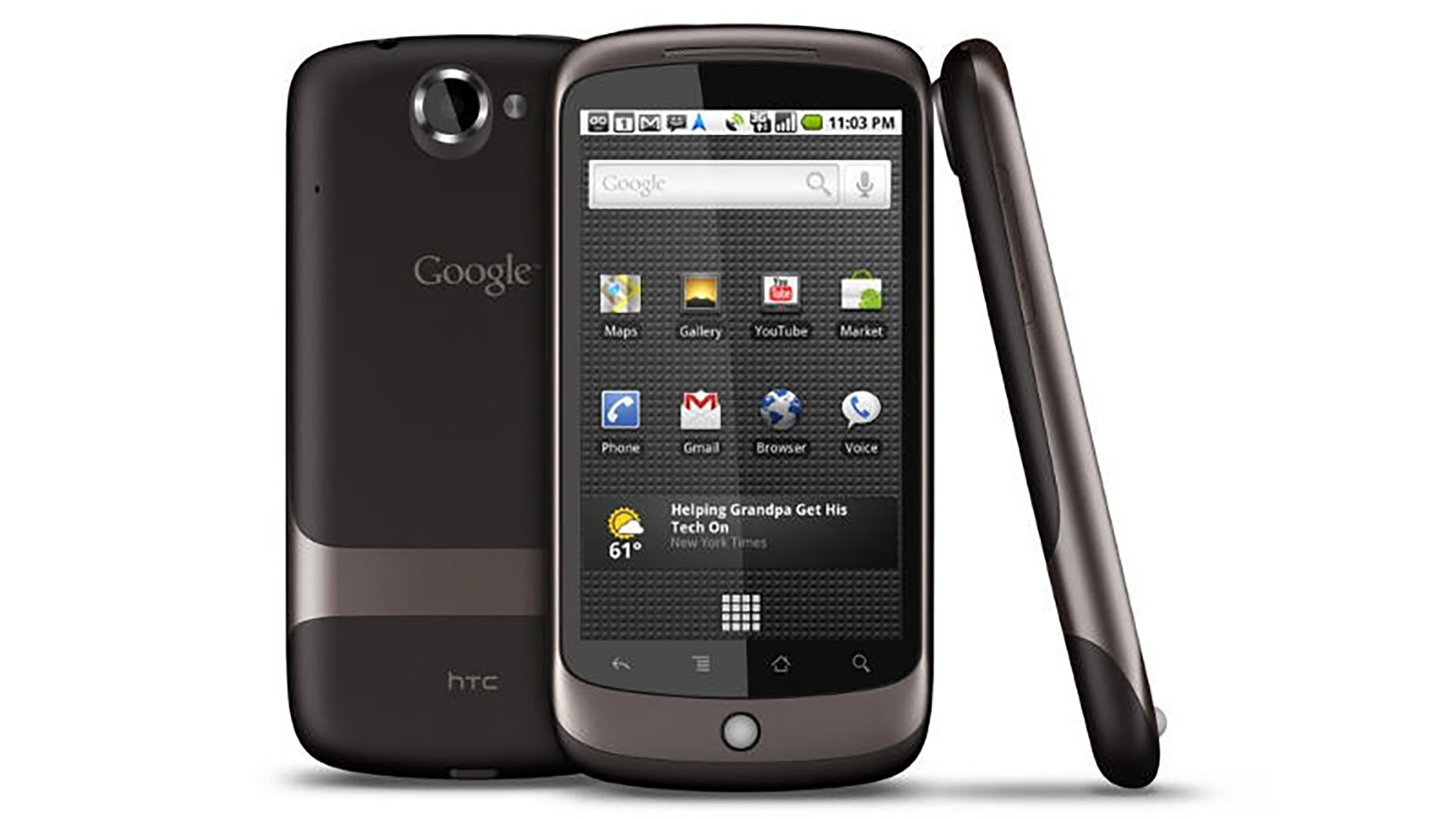
Developer hardware aside, the Nexus One was Google’s first-ever smartphone designed for regular, everyday use. As with previous hardware releases, Google partnered with HTCto manufacture the Nexus One.
The Nexus One ran stock Android and not HTC’s modded Sense UI. This also meant that the device lacked multi-touch, which manufacturers added to their own Android skins in the operating system’s early days. The Nexus One eventually received a firmware update that enabled software-based multi-touch functionality.
As for the Nexus One’s internal hardware, it used a Qualcomm Snapdragon processor clocked at 1GHz. This allowed the phone to extend a performance lead over the competition at the time, at least on paper. However, the 512MB internal storage didn’t leave much room for app downloads or even audio tracks for offline playback. Finally, the 480×800 resolution AMOLED display was another advantage the Nexus One had at the time.
Google Nexus One fast facts:
- The unlocked version of the Nexus One retailed at $529 in 2010.
- Google initially sold the Nexus One through its own web store. However, it eventually abandoned that effort and began partnering with third-party storefronts internationally.
- The Nexus One received just two major Android software updates, making it the least supported Google smartphone in that aspect.
- The first-ever Nexus smartphone shipped with Android 2.1 and only made its way to Android 2.3.3 Gingerbread.
Google Nexus S
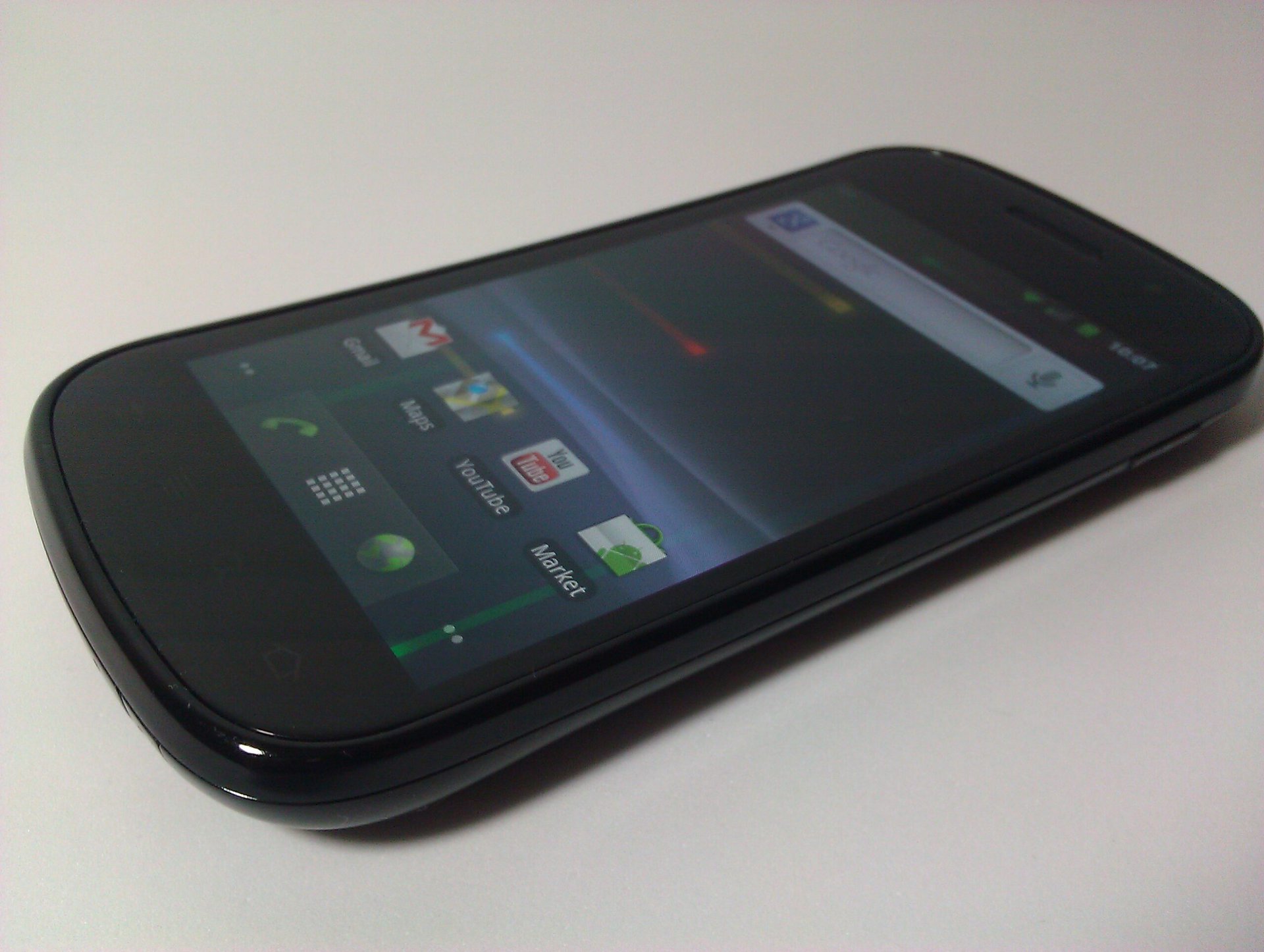
For the Nexus S, Google moved to Samsung for manufacturing. Announced in December 2010, the phone launched less than a year after the Nexus One went on sale.
The Nexus S ditched the trackball but gained a host of new hardware features. Most notably, it shipped with a 4.0-inch Samsung-made Super AMOLED display — the same as the one found on the original Galaxy S. However, some variants of the Nexus S shipped with an LCD display in regions outside the US, Canada, and the EU. Samsung also used its in-house 1GHz Exynos 3310 SoC in the Nexus S.
Overall, the Nexus S received favorable reviews but the lack of unique features made it difficult to stand out in the increasingly crowded Android market.
Google Nexus S fast facts:
- The Nexus S was the first Android smartphone to include Near Field Communication (NFC), which laid the groundwork for Android Beam and Google Pay in the coming years.
- Google updated the Nexus S for nearly two full years. The phone shipped with Android 2.3 Gingerbread and received the Android 4.1.2 update in 2012.
- The phone shipped with 16GB of NAND flash storage, a big step up over its predecessor. However, it didn’t offer microSD expansion.
- Google sold the Nexus S at the same price as the Nexus One ($529), which undercut Apple’s $599 asking price for the iPhone 4.
Samsung Galaxy Nexus
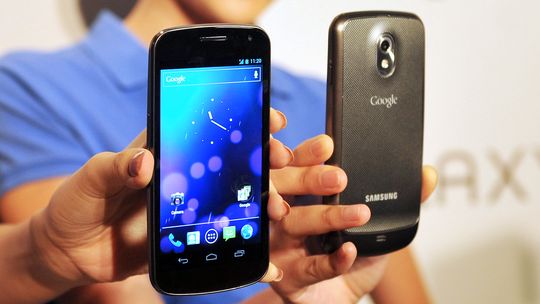
A year after the Nexus S debuted, we got the Samsung Galaxy Nexus. By 2011, Samsung had gained a significant amount of market share and a partnership with Google benefited both companies.
The Galaxy Nexus was the first device to run Android 4.0 Ice Cream Sandwich out of the box and introduced core features that many of us still use to this day. Some examples include face unlock, Android Beam NFC file transfer, software navigation buttons, Google Wallet, and the Roboto system font.
For the Galaxy Nexus, Google opted for an SoC from Texas Instruments rather than one from Qualcomm or MediaTek. But while the OMAP 4460 chip offered decent compute performance at the time, Texas Instruments would soon announce its departure from the smartphone industry. This left Google with no choice but to end software support for the Galaxy Nexus two years after its release.
Galaxy Nexus fast facts:
- Google delayed the announcement of the Galaxy Nexus following the death of Apple’s co-founder and CEO, Steve Jobs, in October 2011.
- The Galaxy Nexus’ face unlock didn’t always work as expected, even failing to work during Google’s launch event. A few users also claimed that they could successfully trick their phones into unlocking with just a photo. With the Android Jellybean update, Google added an optional security feature that required you to blink for face unlock.
- While the unlocked Galaxy Nexus initially sold for $399, the price quickly dropped to $350.
- In a lawsuit against Apple, Samsung’s lawyers revealed that the Galaxy Nexus didn’t sell particularly well. Specifically, it made the company just $250 million in six months and captured 0.5% of market share.
Google Nexus 4
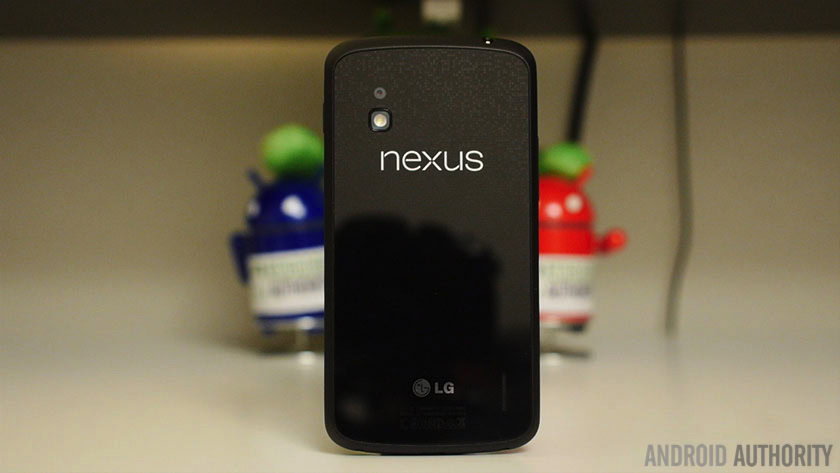
After years of inconsistent branding, Google finally returned to using numbers with the Nexus 4. Google partnered with LG this time around, ending its two-year relationship with Samsung. The fourth-generation Nexus device brought some welcome improvements as well as a few surprises.
The Nexus 4 shared many components with the LG Optimus G, including Qualcomm’s quad-core Snapdragon S4 Pro SoC, 2GB of RAM, and a 4.7-inch IPS LCD display. It was also the first Google smartphone to use premium materials like a glass back and Corning’s Gorilla Glass 2 on the front.
With the Nexus 4, Google pivoted to competing on price and value as well. You could buy the entry-level 8GB model for just $299, far cheaper than competing smartphones with similar specifications. This single-handedly allowed the Nexus 4 to become one of Google’s most popular smartphones — the company reportedly sold upwards of three million devices in under a year.
Google Nexus 4 fast facts:
- The Nexus 4 lacked 4G LTE connectivity, even though the radio hardware supported it to some extent. This omission may have helped Google reach its aggressive launch price.
- The Nexus 4’s glass sandwich construction made it the first Google phone where users could no longer replace the battery without specialized tools.
- Despite its affordability, the Nexus 4 gained support for Qi wireless charging — a premium feature even at the time.
Google Nexus 5
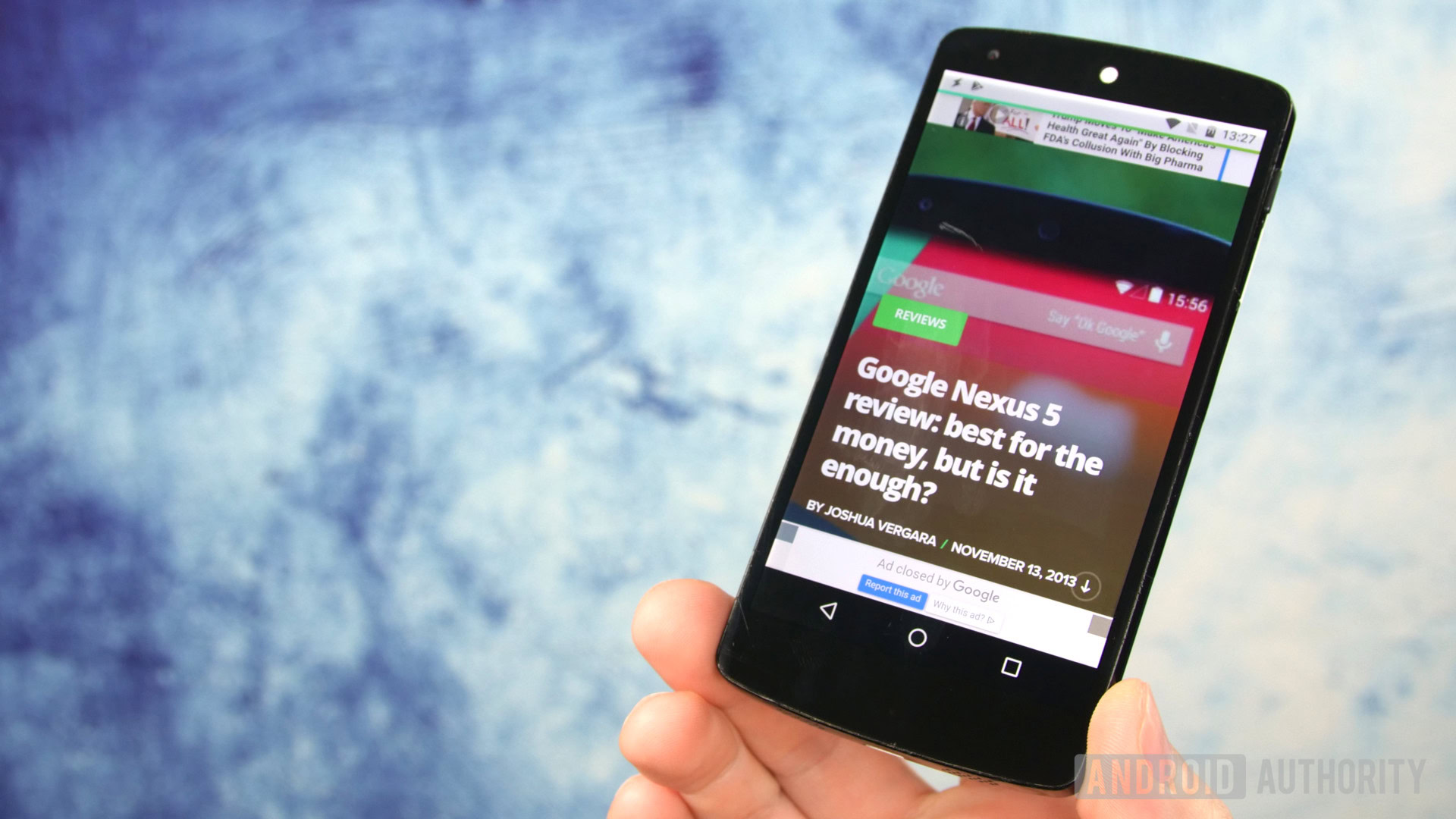
The success of the Nexus 4 prompted Google to keep working with LG through 2013. The Nexus 5 stuck to its predecessor’s strengths, offering flagship-grade specs at a lower price point. It also bundled a higher-resolution 1080p 4.95-inch display, a larger battery, and official support for LTE. The two companies also returned to a more traditional design this time, opting for a soft-touch plastic back instead of glass.
Google started to make software a priority with the Nexus 5.
The Nexus 5 also marked an inflection point for Google in terms of software focus. The phone debuted with the Google Now launcher and Hangouts as the default text messaging app. But the bigger upgrade came in the form of HDR+, a new software-based camera feature. In a nutshell, it allowed the Nexus 5 to take better pictures by capturing a burst of photos at different exposures and combining them for a higher dynamic range.
Ultimately, the Nexus 5 held up incredibly well against the competition because of its aggressive price point, which undercut the iPhone 5S and Galaxy S4 by hundreds of dollars.
Nexus 5 fast facts:
- The Nexus 5 remains one of Google’s best-selling Nexus phones of all time, thanks to better global availability and its competitive spec sheet.
- The Nexus 5 launched with Android 4.4 KitKat and received two major software updates, ending with Android 6.0 Marshmallow.
- Google sold the unlocked 16GB variant of the Nexus 5 for $349, just $50 more than the Nexus 4.
- Even though it featured a larger display and battery, the Nexus 5’s plastic construction meant that it was lighter than its predecessor.
Google Nexus 6

The Nexus 6’s name didn’t just signal Google’s sixth-generation smartphone, it was also a nod to the display size. At 5.96-inches diagonal, its display seemed massive back in 2014 — most smartphone displays came in under 5.5-inches. Google switched manufacturers yet again this generation, favoring Motorola even though it sold off the company to Lenovo earlier that year. Google’s manufacturer choice was on full display as the phone’s back featured Motorola’s prominent logo and dimple. The software had a subtle Motorola flair as well, with exclusive features like an ambient display.
The Nexus 6 looked like a giant Moto X in more ways than one.
The Nexus 6 packed an impressive spec sheet compared to the competition, with a QHD-class display, Snapdragon 805 SoC, and 3GB of RAM. It was also the first phone to launch with Android 5.0 Lollipop and Google’s Material Design UI. It was also the first Nexus smartphone to have a metallic frame, marking the series’ return to the premium market. The camera hardware got a boost this generation too, coupled with Google’s improving computational photography efforts. As a result, the Nexus 6 rivaled other 2014 top-end Android smartphones in terms of imaging.
Nexus 6 fast facts:
- The Nexus 6 launched with Android 5.0 Lollipop with Google promising two years of software updates and an additional year of security patches. The phone eventually received Android 7.1 Nougat as its final update.
- The Nexus 6 was based on the Moto X (2nd generation), which featured a smaller 5.2-inch display and Qualcomm’s Snapdragon 801 chipset.
- Google charged a premium for the Nexus 6 compared to its direct predecessors. At $649, it was a noticeable step up from the Nexus 5’s aggressive $349 price tag.
- The six-inch display size and large dimensions of the Nexus 6 were so uncommon at the time that the phone was referred to as a “phablet”, a portmanteau of phone and tablet.
Google Nexus 5X and Nexus 6P
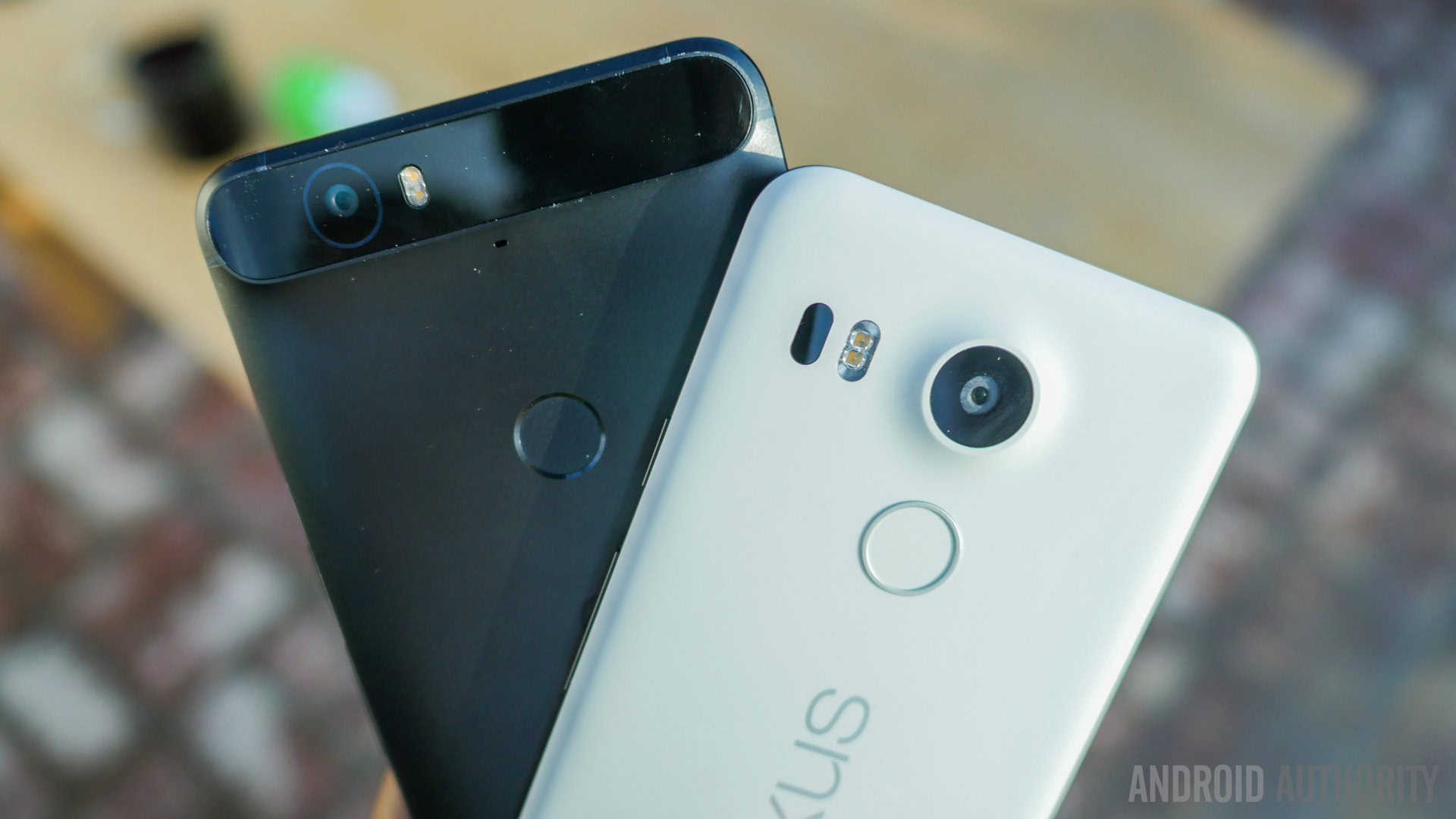
As their names suggest, Google’s 2015 Nexus 5X and Nexus 6P were meant to succeed the Nexus 5 and Nexus 6. This also marked the first time Google released two smartphones in a single year.
The Nexus 5X, made by LG, offered an upgrade path to those looking for a smaller and cheaper Google phone at $379. The Nexus 6P, on the other hand, was made by HUAWEI and offered higher-end specs and a larger 5.7-inch display at a competitive $499 price tag. Given this dual-manufacturer approach, it’s not surprising that the two smartphones didn’t really resemble each other.
See also: The Nexus 6P was the blueprint for Google’s Pixel ambitions
Unfortunately, Nexus 5X and 6P users found themselves plagued with several post-launch issues, with the biggest issue being Qualcomm’s overheating flagship silicon that year. The Snapdragon 810 (and 808 to a lesser extent) became infamous for reaching its thermal ceiling and throttling CPU performance under any meaningful load.
Nexus 5X and 6P fast facts:
- The Nexus 5X and 6P were the first in the series to adopt USB Type-C ports.
- Both smartphones suffered from widespread bootloop issues. It’s still unclear why this problem manifested in the first place, but developers found that disabling certain CPU cores allowed the phones to boot successfully.
- Google and HUAWEI were hit with a class action lawsuit over the bootloop issue and agreed to pay out $9.75 million in settlements, or up to $400 per phone owner. However, some affected users received a newer Pixel XL as a warranty replacement and a smaller settlement amount.
- LG also settled a bootloop-related class action lawsuit in 2018, except this one covered more than just the Nexus 5X. Other affected smartphones included the LG G4, V10, V20, and G5. Affected users could claim up to $425.
- The Nexus 5X and 6P didn’t offer Qi wireless charging, marking a trend reversal for the series.
- Even though Google said that the P in Nexus 6P stood for Premium, the smartphone debuted at a lower price than its direct predecessor. The unlocked model was $150 cheaper than the Nexus 6 at launch.
Google Pixel and Pixel XL
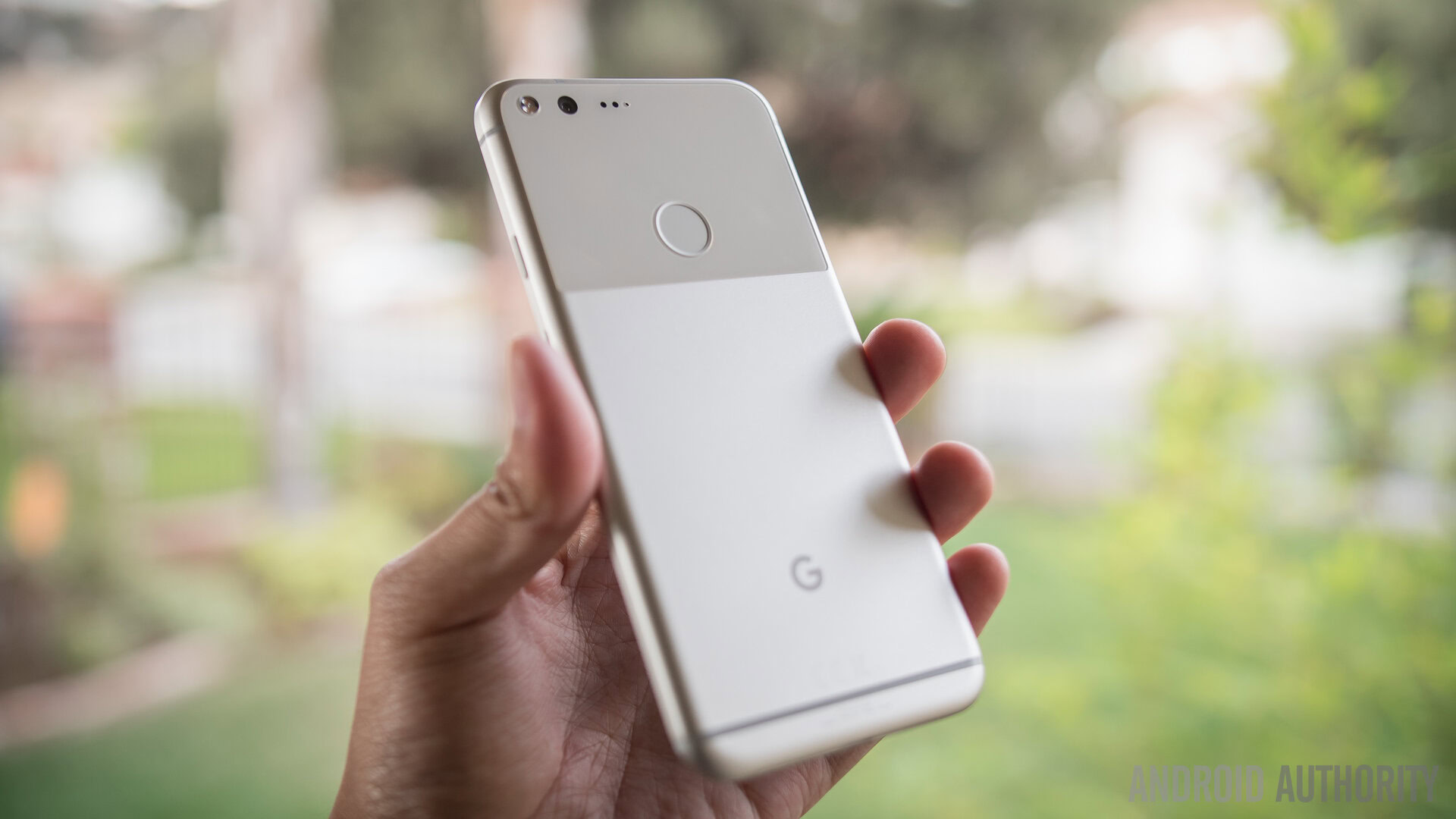
After seven generations of Nexus smartphones, Google decided to shift gears and ditch the branding altogether. The company’s new smartphone brand, dubbed Google Pixel, would have bigger ambitions and not just cater to Android enthusiasts and developers. This reboot was initially met with skepticism from the Nexus fan base. However, sentiment quickly turned positive as the initial wave of reviews praised the Google Pixel for its excellent camera performance and consistent software experience.
The Pixel also marked a turning point in Google’s design language. Even though the company partnered with HTCto create the Pixel and Pixel XL, it exercised greater control over the smartphone’s design and hardware choices. This meant that, unlike the Nexus 5X and 6P, the regular and XL Pixel models actually looked like they came from the same device family. The phones featured a metal body with a premium-looking glass window on the rear.
With the Pixel series, Google began claiming control over its smartphones' design and user experience.
The Pixel name was symbolic of Google’s efforts at achieving the best camera performance with commodity smartphone hardware. At the launch event, the company highlighted that DxOMark ranked the Pixel as the best smartphone camera, thanks to Google’s improved HDR+ technology. The new camera app on the Google Pixel also captured a buffer of photos as soon as the user opened the camera app to dramatically reduce shutter lag, one of the last remaining drawbacks of the HDR+ mode.
The Pixel series also debuted the Google Assistant, which remained an exclusive feature for several months. However, users could get a taste of the Assistant through Google’s new chat app Allo, which also came pre-installed on all Pixel smartphones. In a 2016 interview, Google’s hardware chief Rick Osterloh explained, “Fundamentally, we believe that a lot of the innovation that we want to do now ends up requiring controlling the end-to-end user experience.”
Google Pixel fast facts:
- The Pixel introduced a new Google-centric software skin that would eventually evolve into the Pixel UI we know today.
- The Pixel offered unlimited cloud storage for photos and videos via Google Photos.
- Google was hit with a class-action lawsuit over faulty microphones on this generation of phones and had to pay $7.25 million in a settlement.
- The Google Pixel launched with Android 7.1 Nougat and received three major software updates, ending with Android 10.
- Google commanded a premium asking price for the Pixel line, ditching the affordability trend of the Nexus series once and for all. At $649 for the smaller model, it went toe-to-toe with flagship smartphones like the Samsung Galaxy S7 in terms of pricing. The Pixel XL, meanwhile, launched at $769 — or the same as the Galaxy S7 Edge.
Google Pixel 2 and Pixel 2 XL
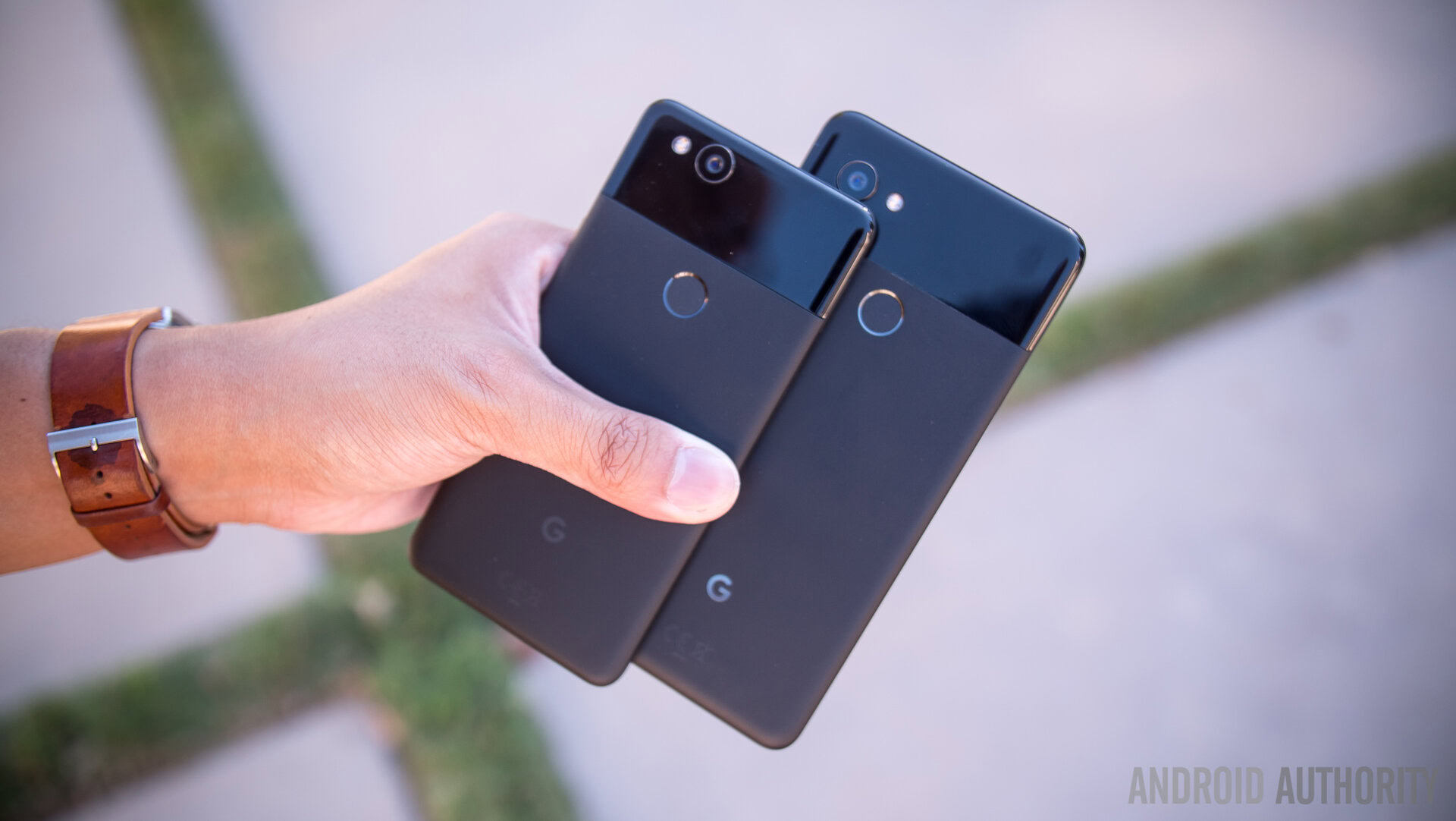
The second-generation Pixel smartphones offered refinement rather than a complete overhaul, which helped the series establish its identity. The Pixel 2 kept the dual-tone metal and glass design but featured smaller bezels and IP67 ingress protection — a premium feature that reviewers noted was sorely missing in the previous generation.
2017’s Pixel smartphones also gained a much-improved camera sensor, which was helped by a new Pixel Visual Core chip. Google also introduced a range of software features with this generation, with the biggest highlights being Google Lens and Portrait Mode. Unlike competing smartphones which relied on a second lens for the feature, the Pixel 2’s Portrait Mode used computational photography and machine learning to create a blurred background with only the primary camera. With these improvements, the smartphone earned the highest DxOMark smartphone camera score yet again.
Google Pixel 2 and Pixel 2 XL fast facts:
- The Pixel 2 series could detect when you squeezed the phone. The action activated Google Assistant.
- While Google didn’t increase the price of the base model, the Pixel 2 XL debuted at $849 — a full $80 more than its predecessor.
- The Pixel 2 series launched with Android 8.0 Oreo and received Android 11 as its final major software update.
- With the second-generation Pixel, Google ditched the headphone jack ahead of most other Android OEMs. For reference, Samsung would keep the 3.5mm audio port around for an additional two years.
Google Pixel 3 and Pixel 3 XL
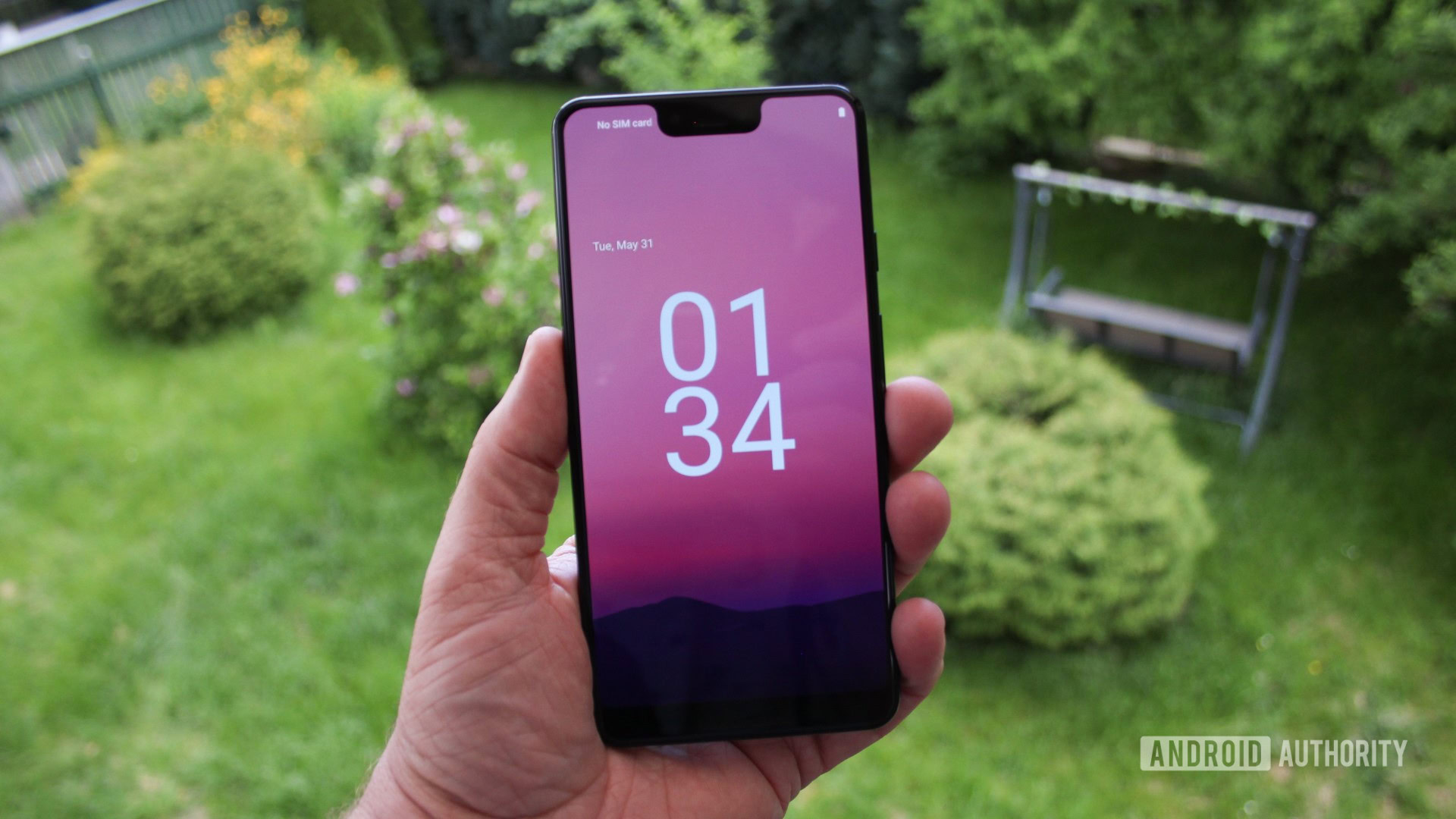
The Pixel 3 and Pixel 3 XL marked the start of Google’s short controversial era of smartphone releases. The phones featured rather lackluster spec sheets by 2018 standards and Google’s whopping $150 price hike for the base model didn’t go down well with fans of the series. The Pixel 3 featured large bezels and the XL model’s huge notch didn’t look much better either. At the same time, Android manufacturers were starting to move to higher screen-to-body ratios with smaller notches and even pop-up cameras.
The Pixel 3 smartphones were controversial for more reasons than one.
Still, the Pixel 3 series introduced some welcome improvements to the tried-and-tested Pixel formula. The smartphones got an aspect ratio bump from 16:9 to 18:9, better IP68 water resistance, and a larger battery. However, the Pixel 3’s biggest leap forward came in terms of camera software. Google’s Night Sight feature used machine learning to improve low-light performance and offer even better results than the already-impressive HDR+ mode. This arguably kick-started the industry-wide computational photography race of the late 2010s. The hardware got a modest upgrade this generation too, with the Sony IMX363 sensor that would become a mainstay of Google smartphones for the next few generations.
Despite this generation’s high price, Google reportedly sold more units of the Pixel 3 than any other Pixel smartphone in the first six months.
Google Pixel 3 and Pixel 3 XL fast facts:
- The third-generation Google Pixel smartphones debuted with a slew of new machine learning-enabled features like a faster Google Assistant, Call Screening, and Google Duplex.
- The Pixel 3 featured a larger 5.5-inch display alongside the taller aspect ratio, a 0.5-inch bump over the Pixel 2.
- The Pixel 3 series dropped the Pixel Visual Core in favor of Google’s Titan M security chip.
- Wireless charging, a feature missing on Google smartphones for several generations, finally made a comeback with the Pixel 3 series.
Google Pixel 3a and Pixel 3a XL
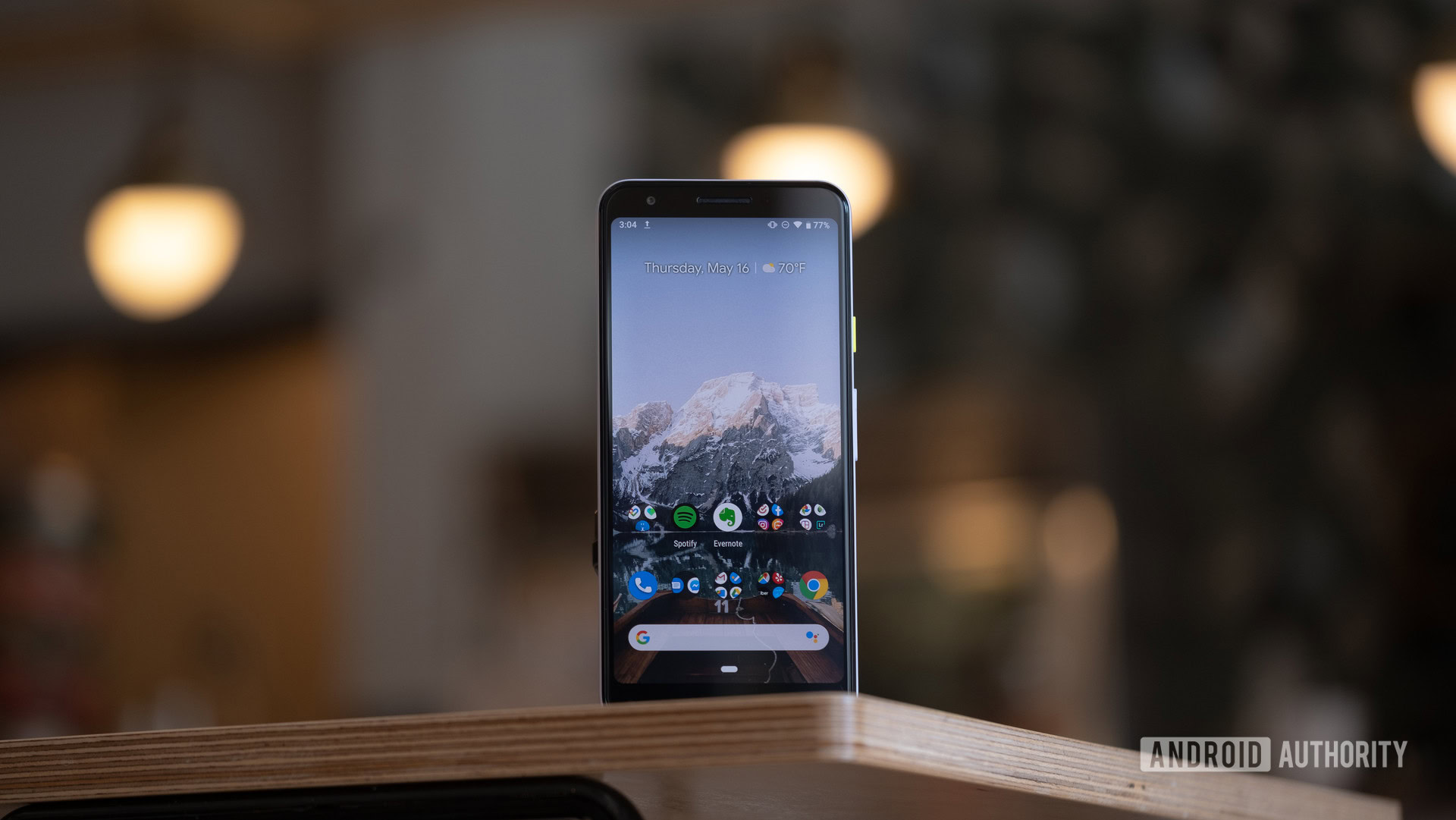
Perhaps acknowledging the ever-increasing launch prices as a potential pitfall, Google announced its budget entry in the series with the Pixel 3a. Priced at $399 for the regular model and $470 for the XL, the two smartphones offered nearly the same software experience at a fraction of the cost.
At these lower prices, Google found plenty of buyers willing to overlook missing features and pared-down hardware. The Pixel 3a featured a plastic body, slower SoC, larger bezels, and no IP rating whatsoever. Despite that, you still got an identical camera experience as the more expensive Pixel 3.
Google Pixel 3a and Pixel 3a XL fast facts:
- The Pixel 3a found great commercial success, with estimates pegged at over six million units between the two models.
- Google didn’t withhold software features like Night Sight on the Pixel 3a. For context, Apple still doesn’t offer Night mode on the iPhone SE series.
- The Pixel 3a was in a league of its own in terms of software support at its price point. No other manufacturer offered a three-year update window for a mid-range Android smartphone at the time.
Google Pixel 4 and Pixel 4 XL
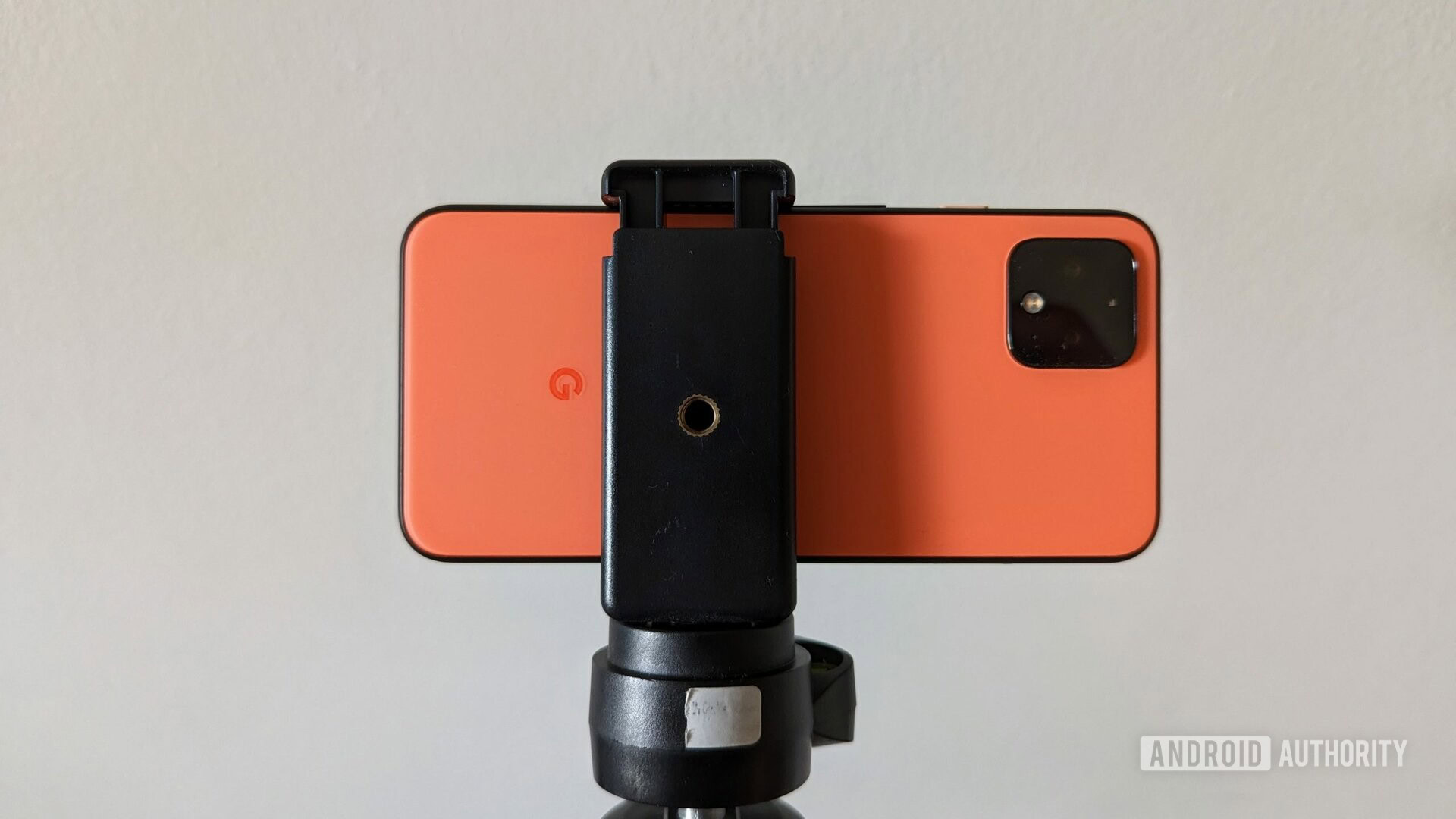
With the Pixel 4 and Pixel 4 XL, Google embraced many smartphone trends at once. Both models gained an additional rear camera lens, faster 90Hz displays, and face unlock. Despite these improvements, however, the phones were almost universally panned for having mediocre battery life and high price relative to their middling spec sheet. Google was also criticized for its odd design decisions like the missing fingerprint reader and the decision to opt for a 2x telephoto lens over an ultrawide camera.
The Pixel 4 series was almost universally criticized for its poor battery life and gimmicky features.
Still, the Pixel 4 introduced a handful of innovative new features in typical Google fashion. The headlining feature was the Soli radar array, which allowed you to control the phone using gestures. Different hand waves allowed you to stop alarms, switch to the next music track, and reject phone calls. However, the feature ended up being perceived as a gimmick by most users and reviewers. And the fact that the sensors demanded a massive notch meant that the feature didn’t return on subsequent Pixel smartphones.
Google Pixel 4 and Pixel 4 XL fast facts:
- The Pixel 4 was the first Google smartphone to feature an astrophotography mode.
- Google didn’t bump the price of the Pixel 4 series, sticking with $799 and $949 for the regular and XL models respectively.
- The regular Pixel 4 got a slightly larger 5.7-inch display, as compared to the Pixel 3’s 5.5-inch display.
- The Pixel 4 series launched with Android 10 and received its final Android 13 update in 2022.
- The Soli radar array prevented Google from launching the Pixel 4 in markets like India where the 60GHz wireless frequency isn’t licensed for civilian use.
Google Pixel 4a
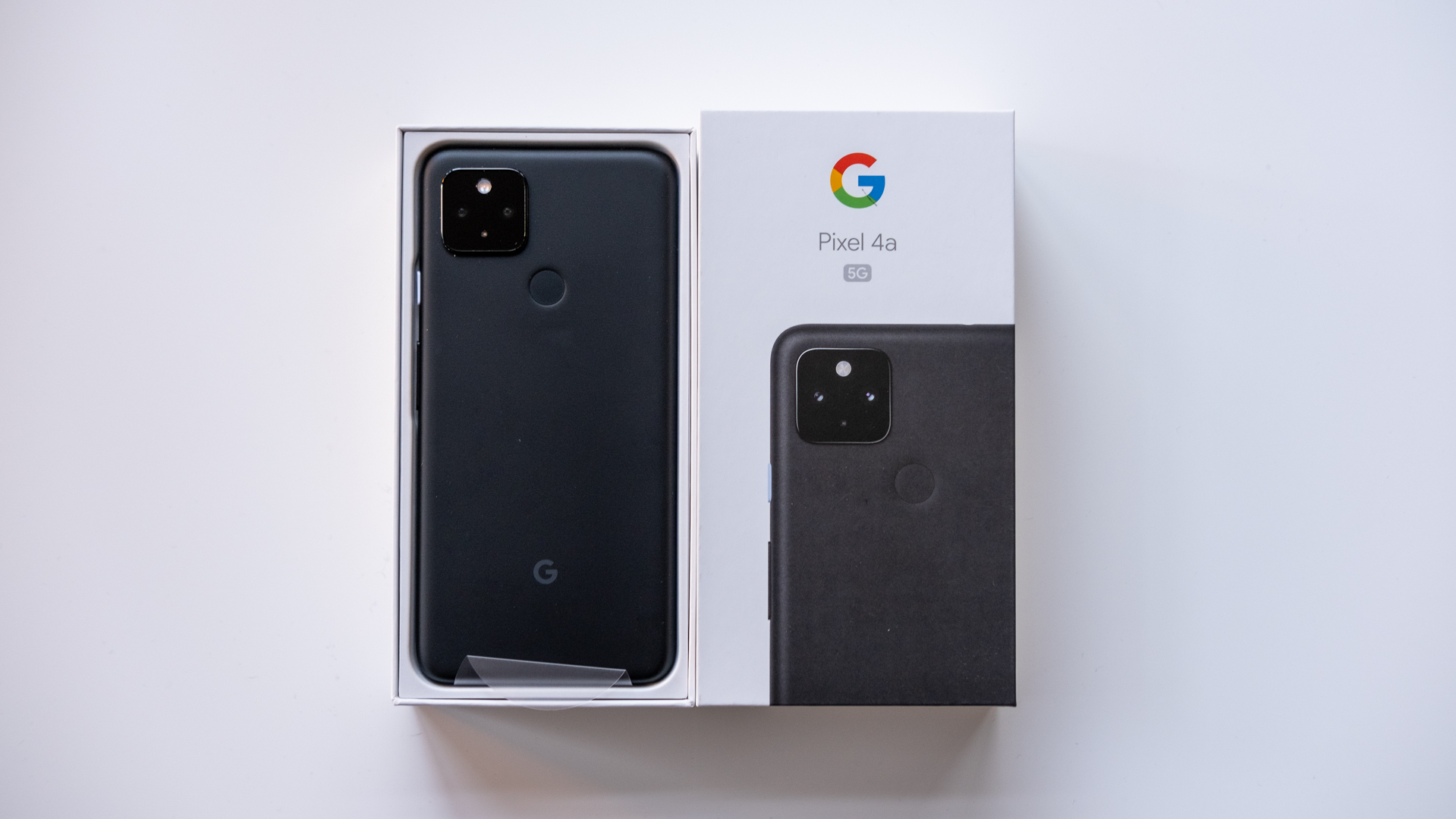
Having found success in the mid-range market with the Pixel 3a, Google returned with an even more aggressive price point a year later. The Pixel 4a was priced $50 lower than its predecessor but featured massive upgrades on nearly every front. The smartphone also adopted Google’s new simpler design language from the regular Pixel 4. However, it didn’t get the Soli array or face unlock features from the full-fledged flagship.
Year-over-year, the Pixel 4a’s list of upgrades included a larger display, faster SoC, double the internal storage, and 50% more RAM. And despite sporting a larger display, the Pixel 4a was significantly smaller in the hand than the Pixel 3a due to its smaller bezels.
Google Pixel 4a fast facts:
- Google didn’t release an XL model alongside the Pixel 4a. While the Pixel 4a 5G later filled that gap with a faster processor and 5G connectivity, it also carried a much higher $499 price tag.
- The cheaper Pixel 4a featured a noticeably higher screen-to-body ratio than the regular Pixel 4 due to the missing Soli array.
- The Pixel 4a launched with Android 10 and its software update window will end in August 2023.
Google Pixel 5
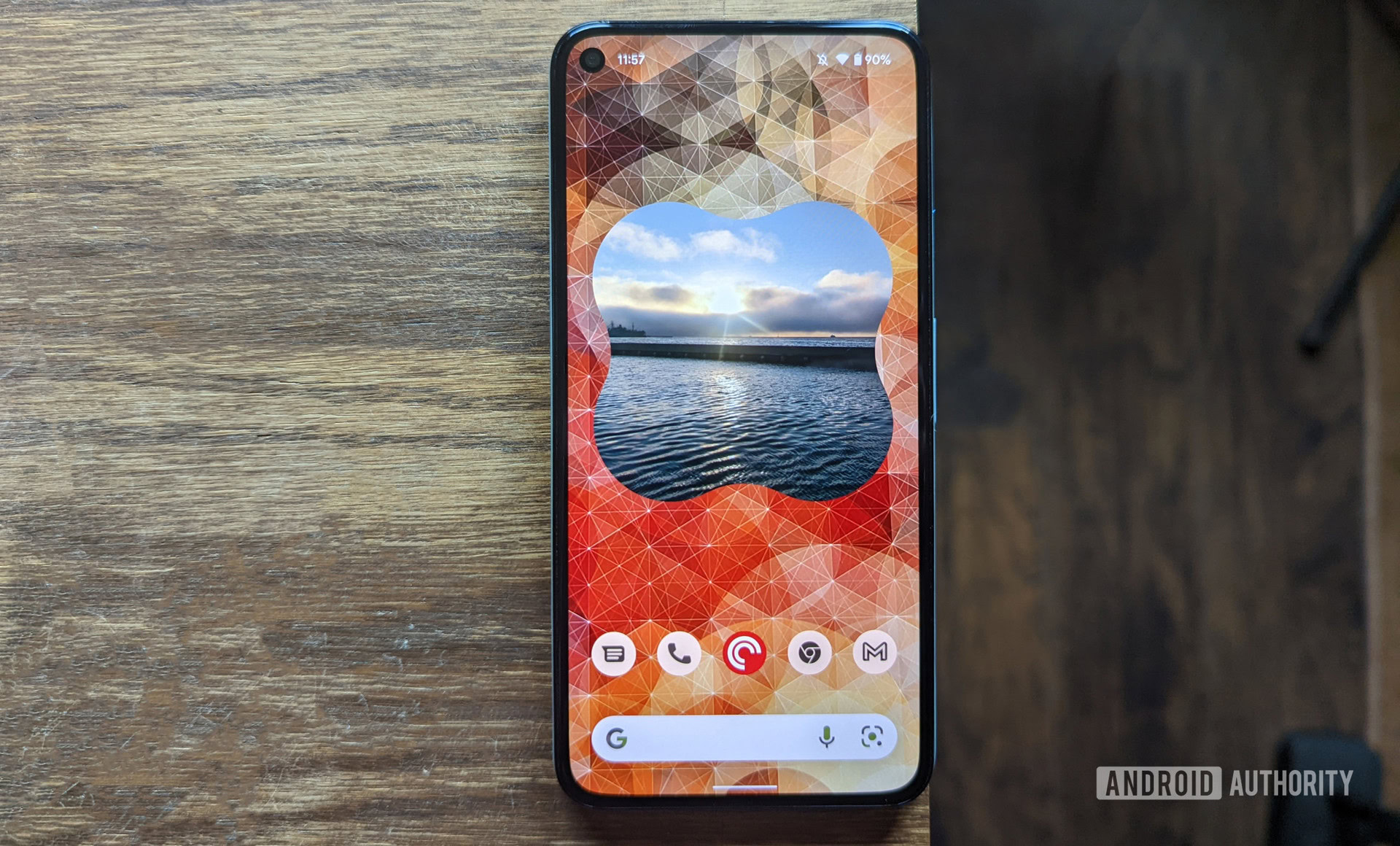
After the Pixel 3 and Pixel 4’s mixed reception, Google began to rethink its premium pricing strategy with the Pixel 5. Unlike prior models, it only featured a mid-range Snapdragon 765G processor (the same as the Pixel 4a 5G). However, this allowed Google to drop the price to $699 instead and focus on recapturing the sub-flagship market instead.
The Pixel 5 is still the only flagship Google smartphone to feature a mid-range processor.
Despite the lower-end SoC and cheaper price tag, the Pixel 5 got quite a few things right. Google swapped out the telephoto lens for an ultra-wide camera, offered more RAM, and increased the battery capacity to fix its predecessor’s biggest Achilles’ heel. It also regained the fingerprint sensor as Google did away with the Soli radar array for a higher screen-to-body ratio.
Google Pixel 5 fast facts:
- Google skipped the XL variant altogether this generation, releasing the cheaper Pixel 4a 5G at the same time instead. The latter was slightly larger than the Pixel 5 but lacked premium features like a glass back and wireless charging.
- The Pixel 5 was the first Google smartphone to feature Battery Share — or reverse wireless charging.
- Launched in 2020, the Pixel 5 debuted with Android 11 and will receive three years of major software updates.
Google Pixel 5a
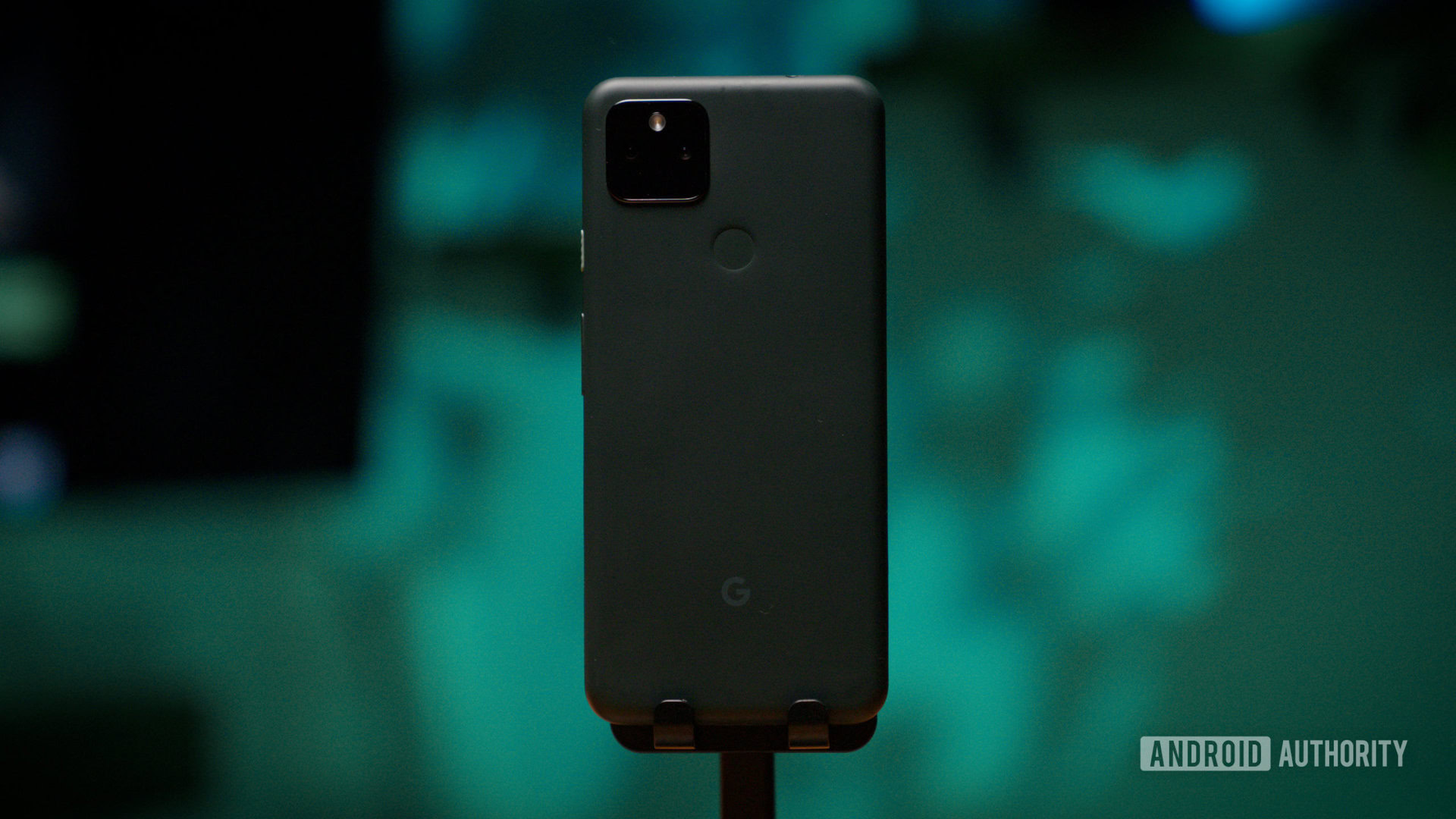
Amid a global chip shortage, the Pixel 5a was delayed multiple times. Even when it did release, it flew under the radar for most people as it was simply a slightly improved version of the Pixel 4a 5G. And while it did start at a slightly lower $449 price point, Google didn’t release a successor to the cheaper, non-5G Pixel 4a.
The Pixel 5a didn’t have many major upgrades. Most of the improvements were subtle, like a new IP67 ingress rating, a slightly larger display, and a 20% larger battery.
Google Pixel 5a fast facts:
- Google launched the Pixel 5a in just two markets: USA and Japan. Google initially planned to expand global availability but backed down as the chip shortage continued to persist.
- The Pixel 5a launched with Android 11 and will receive three years of major version updates.
Google Pixel 6 and Pixel 6 Pro
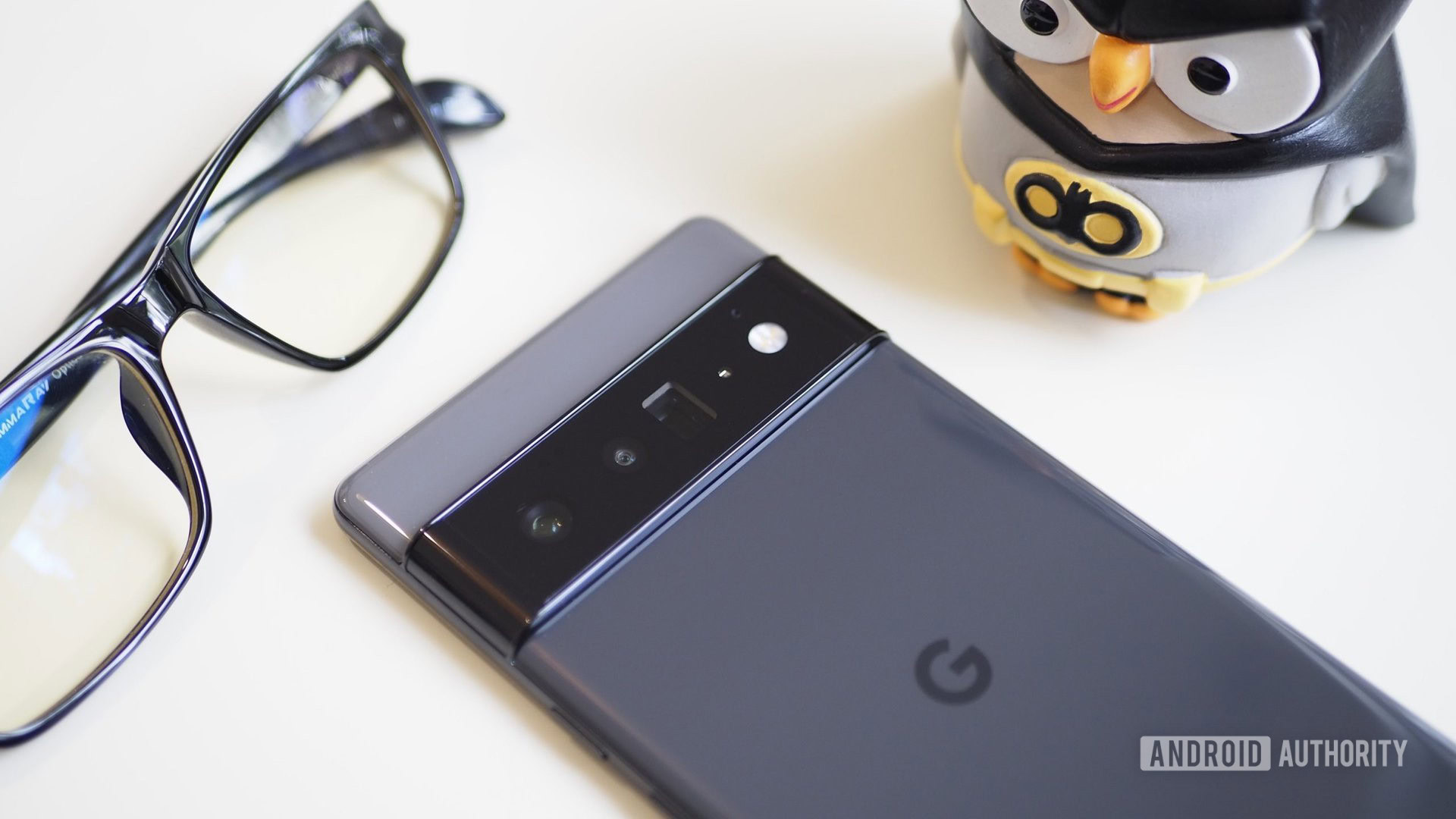
The Pixel 6 and Pixel 6 Pro marked a return to form for Google. With a brand-new design language, the in-house Tensor processor, and a slew of new machine learning-based software features, the Pixel 6 series represented perhaps the biggest year-over-year upgrade in Google’s smartphone history.
The Pixel 6 marked a return to form for Google.
Unlike its predecessor, the Pixel 6 delivered a premium smartphone experience with flagship-level specs. Despite that, Google sold the base model Pixel 6 at just $599 — much cheaper than competitors like the Galaxy S21 and iPhone 13. The larger Pro model, meanwhile, started at $899 with minor upgrades like a curved screen, telephoto lens, and a larger display.
The cameras got a huge upgrade with the Pixel 6 series as well. Google finally ditched the Sony IMX363 sensor after three generations in favor of a larger sensor. This single change modernized the Pixel’s camera hardware and allowed the company to flex its computational photography capabilities even further. The Pixel 6 introduced a host of new camera-related features like Magic Eraser, Face Unblur, and Real Tone.
Finally, the in-house Tensor processor also enabled Google to develop exclusive software features, many of which are still exclusive to Pixel phones. Some notable examples include Assistant voice typing, Now Playing, and Live Translate.
Read more: Google Pixel 6 review | Google Pixel 6 Pro review
While the Pixel 6 was universally praised for its value and unique features, it suffered from network connectivity issues and software bugs. Still, the phones went on to sell extremely well — Google eventually acknowledged that the Pixel 6 phones outsold the Pixel 4 and Pixel 5 combined.
Google Pixel 6 and Pixel 6 Pro fast facts:
- At $1,099 for the top-end 512GB model, the Pixel 6 Pro marked the first time you could spend over $1,000 on a Google smartphone.
- Thanks to the in-house SoC, Google promised to deliver five years of security patches to the Pixel 6 series. However, the smartphones will still only receive three Android version updates, like previous entries in the series.
- The Pixel 6 and Pixel 6 Pro were the first Google smartphones to feature Wi-Fi 6E connectivity. The Pro model was also the first to include support for Ultra Wideband (UWB).
- The Pixel 6 series launched with Android 12 and will receive its final major update in 2024.
Google Pixel 6a
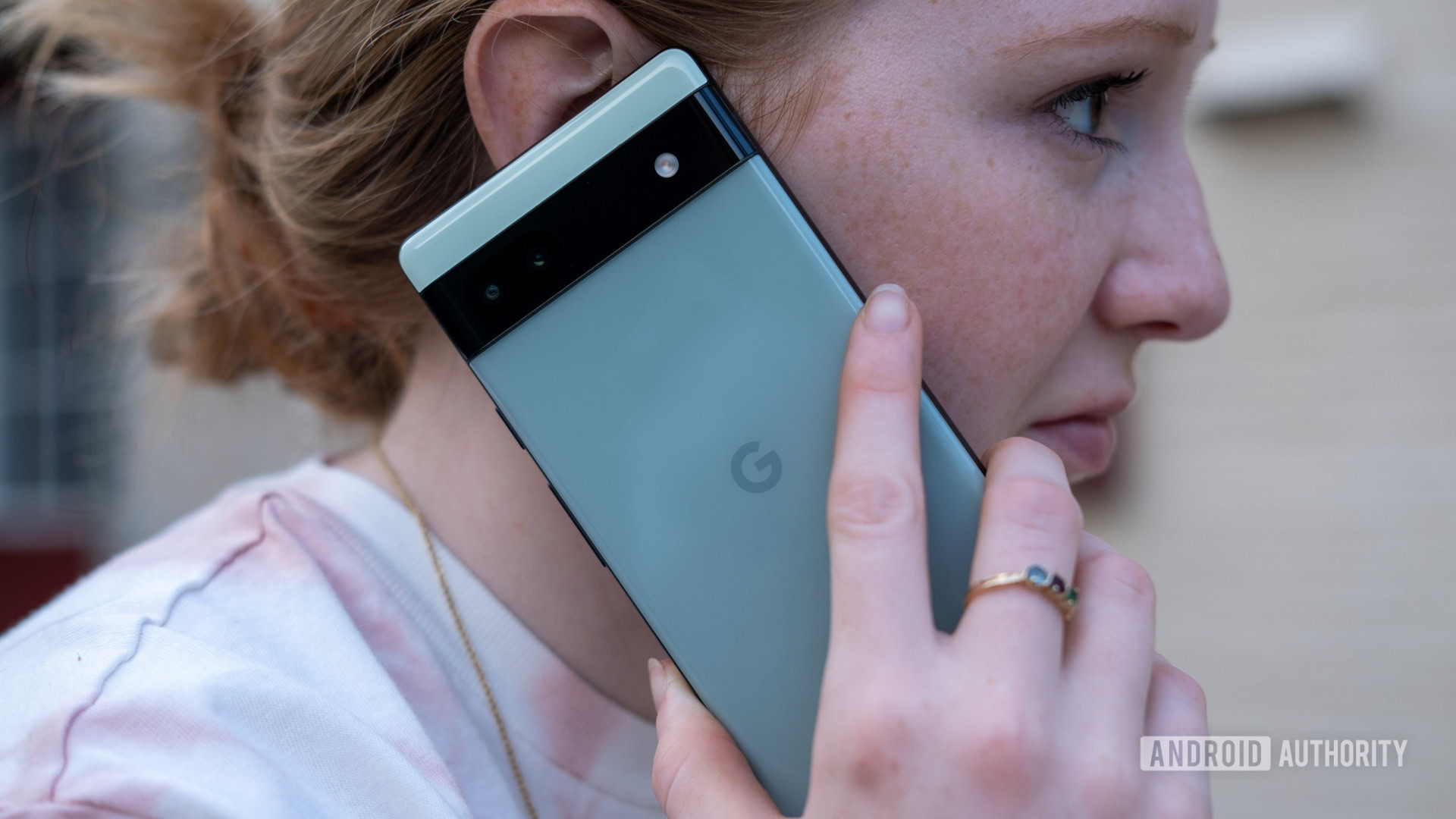
The Pixel 6a was a significant departure from earlier budget Google Pixel phones. Rather than opting for a mid-range SoC like the Snapdragon 765G, Google brought its high-end Tensor chip to the Pixel 6a. The price didn’t increase either — the Pixel 6a started at $499, no different than the Pixel 5a. Google also carried over the design language of the Pixel 6 series to the budget smartphone with the distinctive camera bar on the rear.
The inclusion of the Tensor SoC meant that the Pixel 6a got many of the machine learning features Google debuted with the Pixel 6 series. In fact, the only major downgrades compared to the Pixel 6 were a smaller, lower refresh rate display (60Hz vs. 90Hz) and a last-gen camera setup.
Read more: Our Google Pixel 6a review
Google Pixel 6a fast facts:
- The Google Pixel 6a dropped the 3.5mm headphone jack. The fingerprint reader also moved from the rear to under the display for the first time in the series’ history.
- The Pixel 6a used the Sony IMX363 camera sensor found in prior Pixel flagships, including the Pixel 5.
- Thanks to improving supply chains, Google managed to expand global availability and went on to launch the Pixel 6a in 13 countries.
Google Pixel 7 and Pixel 7 Pro: The latest Google phones

Rather than reinventing the wheel, Google decided to refine an already successful formula with the Pixel 7 and Pixel 7 Pro. And at first glance, it’s evident that Google didn’t change much with these phones. Both Pixel 7 looked nearly identical to their predecessors, save for the rear camera bar being made out of aluminum instead of glass.
Most of the improvements can instead be found under the hood in the form of the upgraded Tensor G2 processor and an improved modem for better cellular connectivity. Google also tried to further differentiate the regular and Pro models this generation, with the latter gaining autofocus on the ultrawide lens. This allows the Pixel 7 Pro to be used for macro photography. Other notable camera improvements included faster Night Sight processing, Cinematic blur for video, and Photo Unblur.
Read more: Google Pixel 7 review | Google Pixel 7 Pro review
Google Pixel 7 and Pixel 7 Pro fast facts:
- With the Pixel 7 and Pixel 7 Pro, Google regained the confidence to enter markets like Scandinavia and India. The latter missed out on flagship Pixel releases following the Pixel 3.
- Google revived facial recognition on the Pixel 7 series. However, the feature relies on the front-facing camera and isn’t considered secure enough for authenticating payments.
- Owners of a Pixel 7 series smartphone get free access to Google One VPN for the lifetime of the device.
- The Pixel 7 launched with Android 13 and will receive major software updates till 2025.
And with that, you’re now up-to-date on the history of Google phones. Do you have a favorite? Let us know in the comments below.